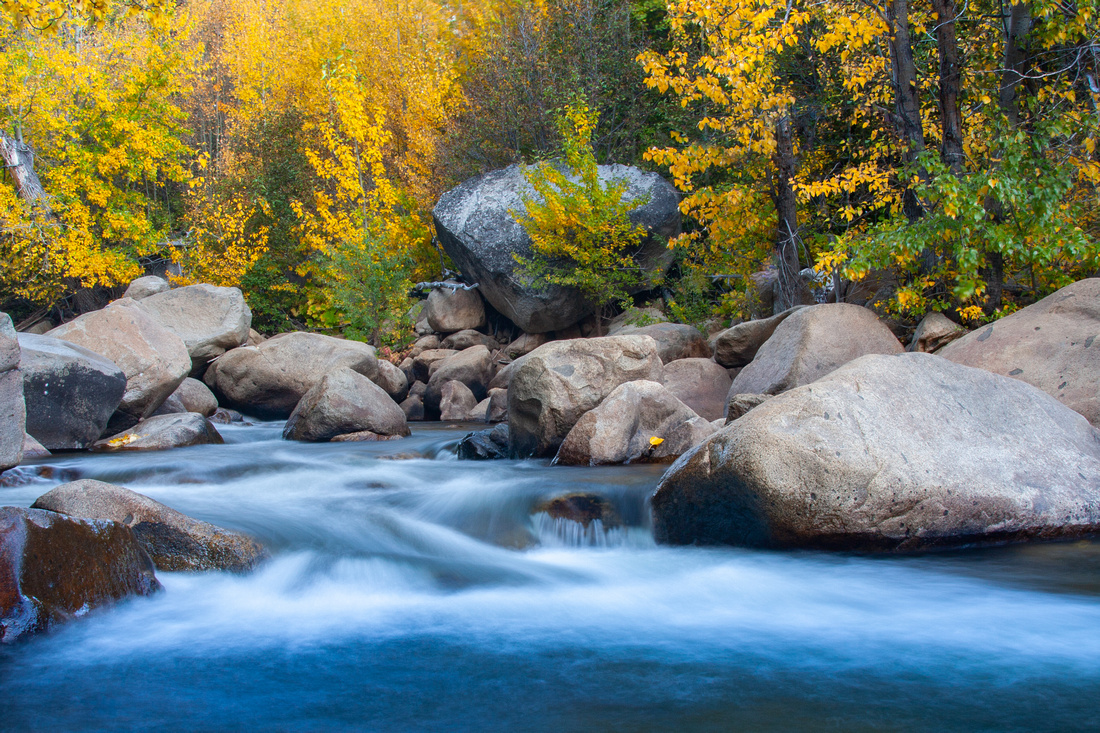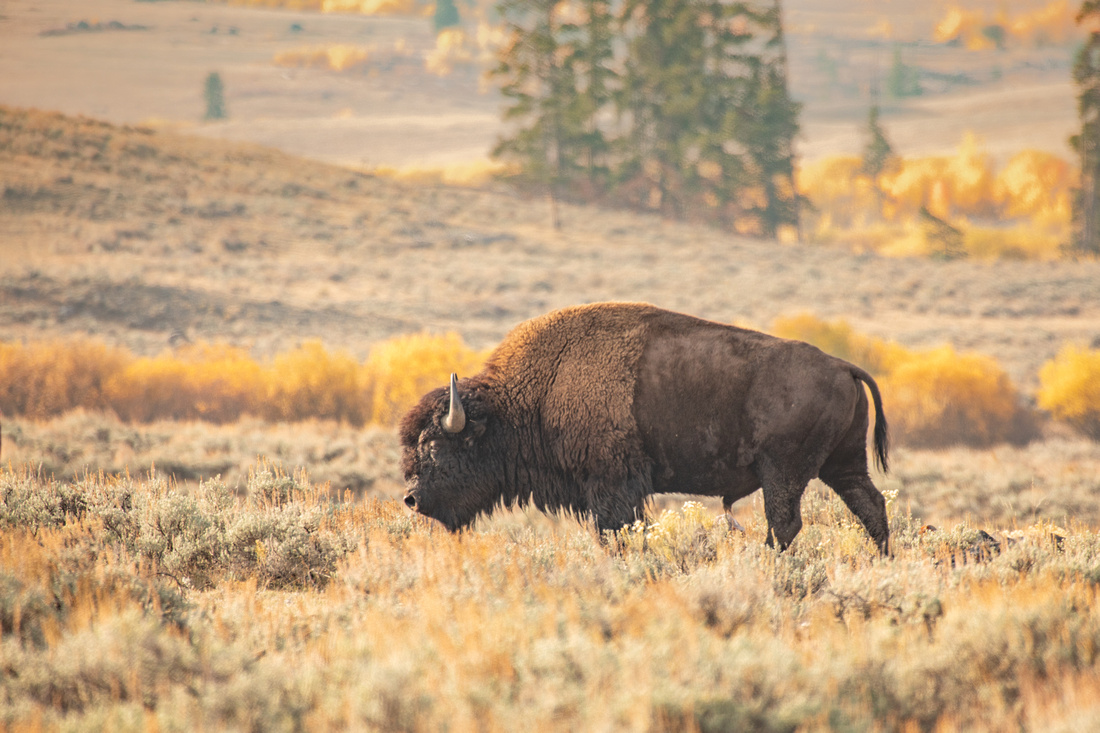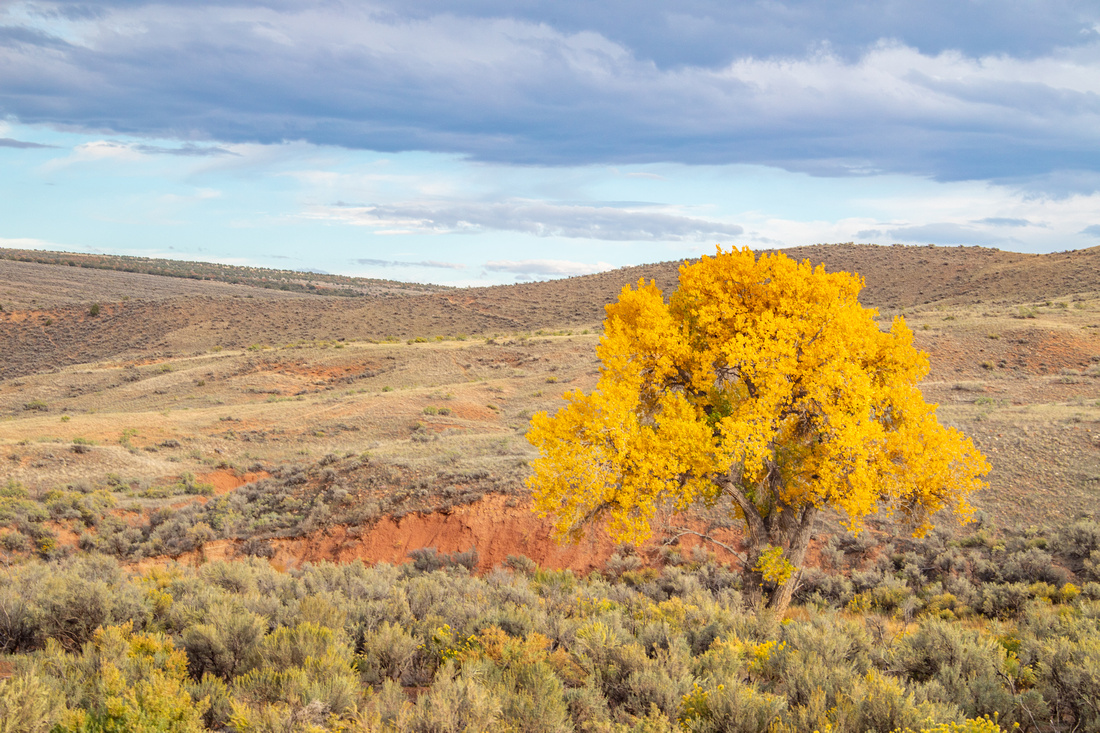Fall Color Photography Tips
Catching Fall: Tips for capturing your best autumn photos
Text and photos by Heather Cline
 
North Lake, Sierras |
Fall is officially here and showing off it's colors. If you aren't sure where to go to see all that fall has to offer, check out my post on fall color locations. This article will provide some tips for capturing that fall color when you find it.
1. Motion blur
Motion blur in photography is the intentional blurring of an object to create a visual effect. This can be done with water, wind, wildlife, people, automobiles, etc. This can be achieved using a slower shutter speed, such as 1/125 second for a vehicle or 1 second for moving water. Motion blur adds an unexpected element and drama to your photographs.
 
Carson River, photographed at 2.5 seconds to create silky water movement |
2. Abstract
Abstract images can be created using a variety of photo equipment, processes, and/or materials. These images contain objects that aren't immediately associated with the object(s) in the real world. Abstracts can be created in any light, weather, point of view that you find interesting, making these a great option if you are waiting for the light to get "good" or struggling to find an inspiring composition.
 
Aspen abstract created by panning vertically, Tom Minor Basin |
3. Incorporate the local wildlife
This one isn't always easy but if you are out shooting at the edges of the day, you will increase the odds of seeing wildlife and these can make for some very rewarding images. You can opt for an image that incorporates the animal's environment or zoom in at a wide aperture and blur out the background, leaving a hint of the season's colors.
 
Bison, Yellowstone National Park |
4. Macro
Fall leaves provide excellent opportunities for macro images because of the color and detail you can capture. If you are out shooting fall colors and it's overcast, this creates beautiful conditions for macro because the even light makes for more balanced exposures.
 
Fallen leaf detail on a rainy afternoon, Yosemite National Park |
5. Panoramas
If you are shooting somewhere that has a grand vista, take advantage and create a panorama. These tend to be more successful by using a tripod, making sure it is level, and overlapping each image by at least 25%. The resulting images can be stitched together using post-processing software fairly quickly.
 
Oxbow Bend, Tetons National Park |
6. Contrasting color
It's really no secret that use of contrasting color can produce more interesting images but it is worth mentioning here. Thankfully, blue skies are fairly common this time of year and offer the perfect contrast to yellow and orange leaves.
 
Autumn color contrasted with blue skies (and approaching storm) |
7. Reflections
Reflections is another subject you can capture during the middle of the day when the light just isn't that great. The reflection of the leaves in water illuminated by sunlight really pop to create eye catching images.
 
Aspen leaf and aspens reflected in river |
I hope this article has provided you with some helpful tips for capturing your best autumn photographs. If you would like to view additional photos from this blog, visit my gallery here